Livestock are domestic animals that are used to produce food and many other valuable products. The skins of some livestock provide such important materials as leather and wool. Various organs of livestock supply drugs used by countless people.
Farmers in developing nations use livestock to pull farm equipment and to transport people and materials. Most of the world’s livestock are raised on farms and ranches. However, some people raise rabbits, chickens, or other small livestock in their yards.
The chief kinds of livestock raised throughout the world are cattle, hogs, poultry, sheep, and horses. Other kinds of livestock include donkeys, goats, mules, and rabbits. In some countries, farmers raise llamas, reindeer, water buffalo, and yaks. The science of raising, breeding, and caring for livestock is called animal science.
At one time, people wandered from place to place hunting animals and gathering plants for food. Several thousand years ago, people began to domesticate and raise various kinds of livestock. The use of domesticated animals as a source of food and power made it possible for people to settle in one place. They then could begin farming.
Through the centuries, farmers improved their livestock through various breeding methods. Today, many livestock raisers enter their animals in livestock shows. Judges rate the livestock on such points as their size and their yield of meat. In countries with advanced technology, many breeders use a computerized system that provides a genetic analysis of an animal’s traits.
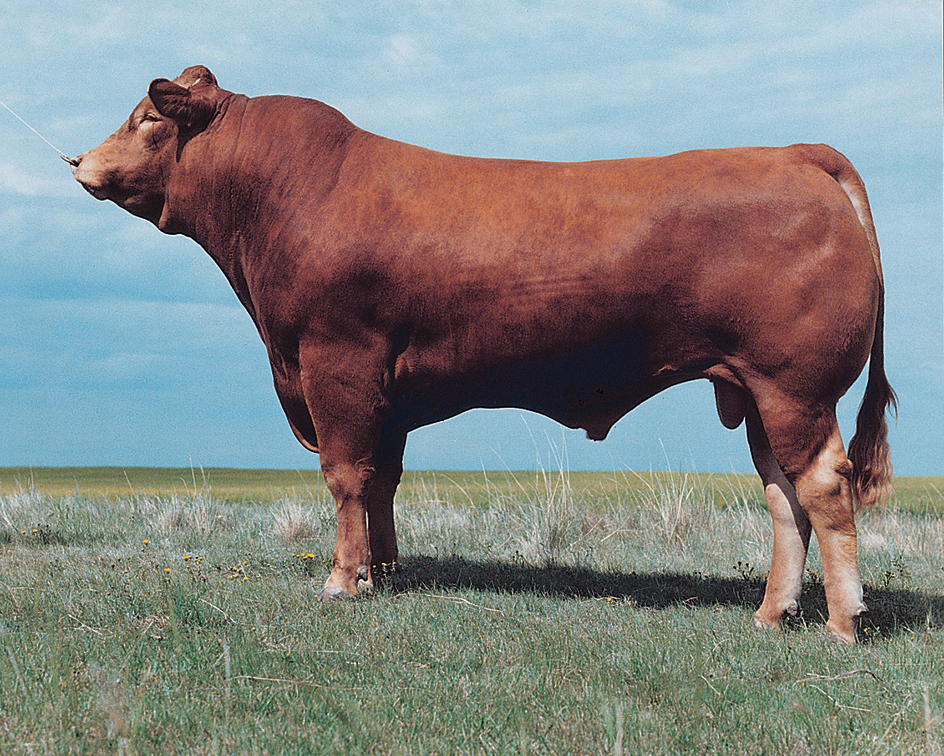
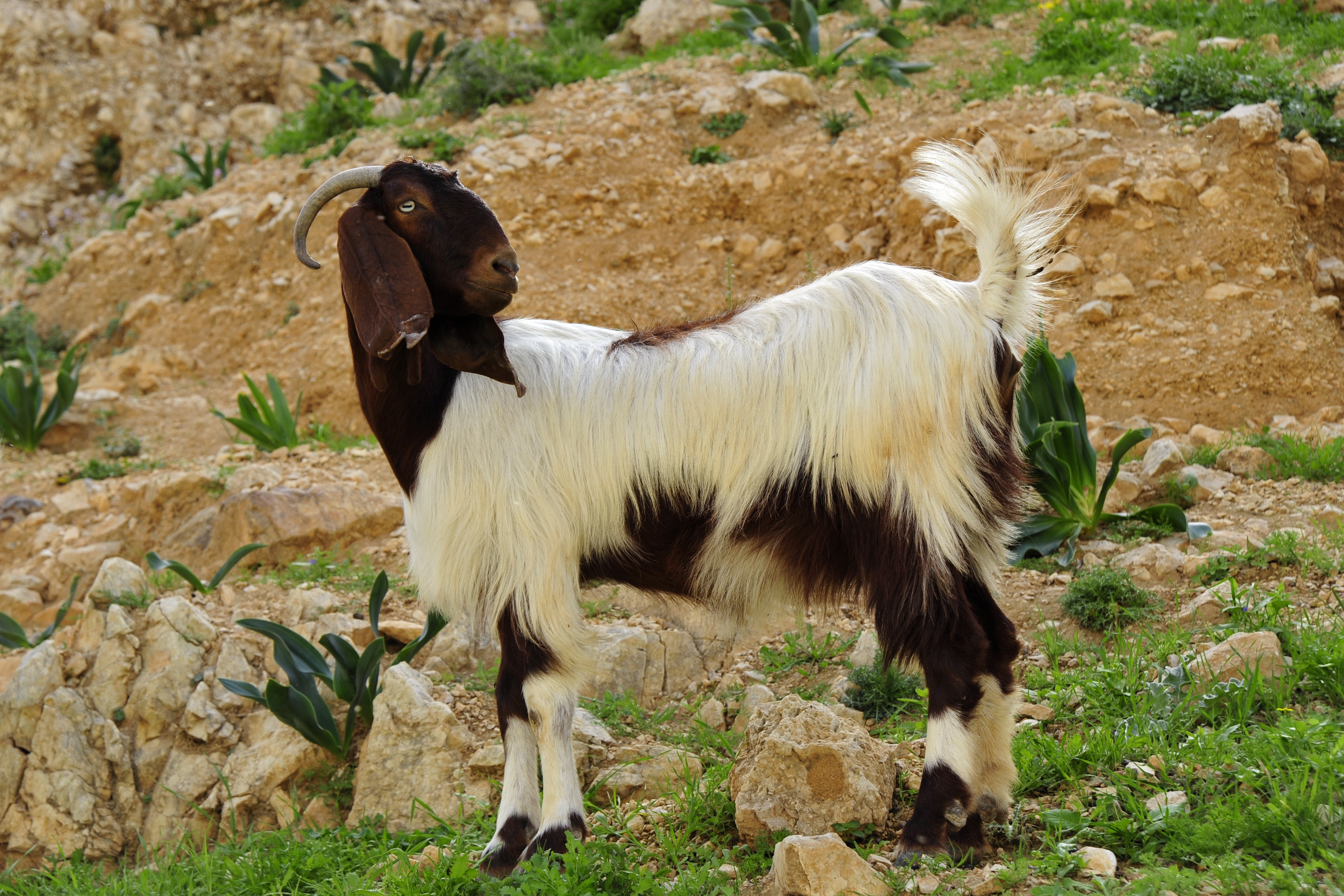
This article provides general information on livestock. See also the separate World Book articles on the animals discussed.
Uses of livestock
In most parts of the world, livestock provide such food products as meat, butter, cheese, eggs, and milk. These foods contain large amounts of protein, which builds new tissue and maintains and repairs old tissue in the human body. Animal food products also supply minerals and vitamins that people need for good health.
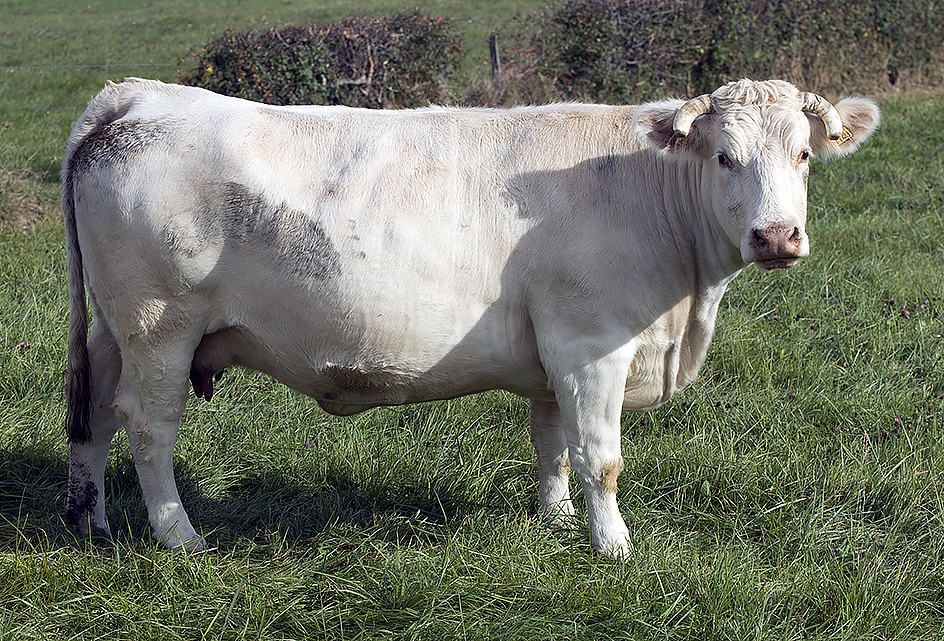
Livestock also provide such valuable by-products as fur, hair, leather, and wool. These materials are used to produce blankets, brushes, clothing, shoes, and other goods. Manufacturers use the hoofs and horns of livestock to make such articles as buttons, combs, glue, and knives. Other livestock by-products are used in the preparation of livestock feed.
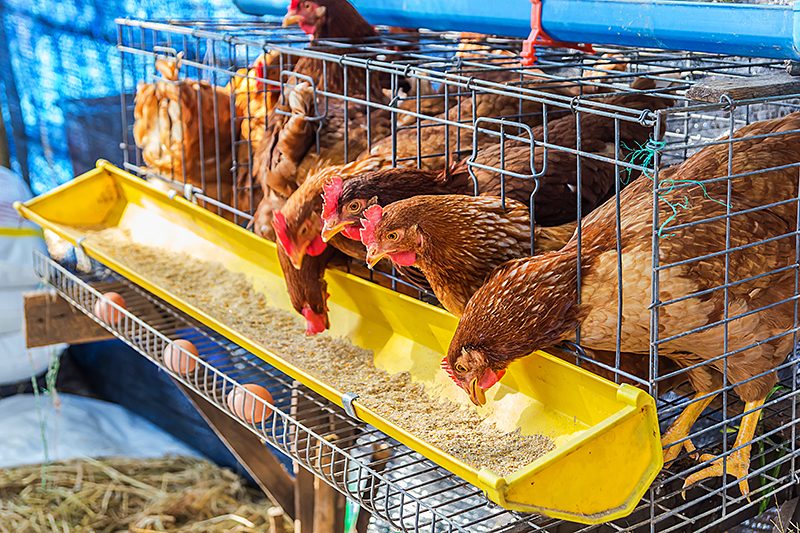
Some of the glands and organs of certain livestock are used to make such drugs as epinephrine, insulin, and pepsin. Animal fat can be processed and made into livestock feed, shortening, and soap. Manufacturers use the feathers of ducks and geese in making bedding and insulated clothing.
Every year, livestock produce tons of body wastes that are used to fertilize the soil. This organic fertilizer increases the growth and food production of many plants.
Horses were once widely used as work animals on farms. But automated farm equipment has replaced horses for farm work in most parts of the world. Today, people in developed nations use horses primarily for recreational riding, and for racing and other sports.
Care of livestock
Feed.
A domestic animal’s daily food intake is called a ration. A balanced ration contains the nutrients (nourishing substances) that the animal needs for growth and good health. These nutrients include carbohydrates, fats, minerals, protein, and vitamins. Animals suffering from nutritional deficiencies produce less meat and milk, or fewer eggs. They may become unhealthy. Animal feed companies and many livestock producers use computers to determine the kind and proportion of ingredients used in livestock rations.
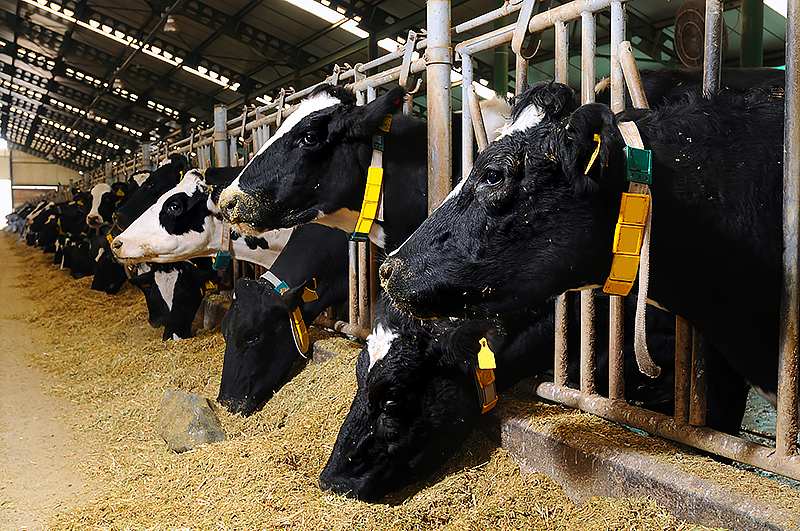
Swine and poultry feed consists of various grains, by-products from food processing, minerals, vitamins, and concentrated plant and animal proteins. Cattle, sheep, and other ruminants (animals with more than one stomach compartment) eat the grasses and legumes (plants in the pea family) of pastureland. They are also fed grain, hay, the stalks of certain plants, and other crop remains. The meat, milk, and eggs that livestock yield are more complete sources of protein than the plants they eat. Cattle that eat only grain can produce more milk or beef that is more tender than cattle that are fed a regular diet.
Many farmers raise beef cattle in fenced-in areas called feedlots. These animals receive grain and food-processing by-products that increase their growth rate. The use of feedlots decreases the amount of land needed for grazing. It also concentrates the amount of animal wastes available for use as fertilizer. Farmers use wastes from feedlots to fertilize their crops.
Drugs called additives are blended with some feeds to increase the animal’s growth rate, reduce the amount of food required for growth, and lessen the chance of disease. These additives include antibiotics and synthetic hormones. In many countries, the government controls the dosage and use of certain additives that might harm animal or human life.
Shelter.
Livestock require protection from severe weather so they can maintain satisfactory growth and reproduction. Before domestication, these animals could more easily live without shelter. Through the years, farmers have developed breeding methods designed to increase meat production. But livestock have become less hardy as a result.
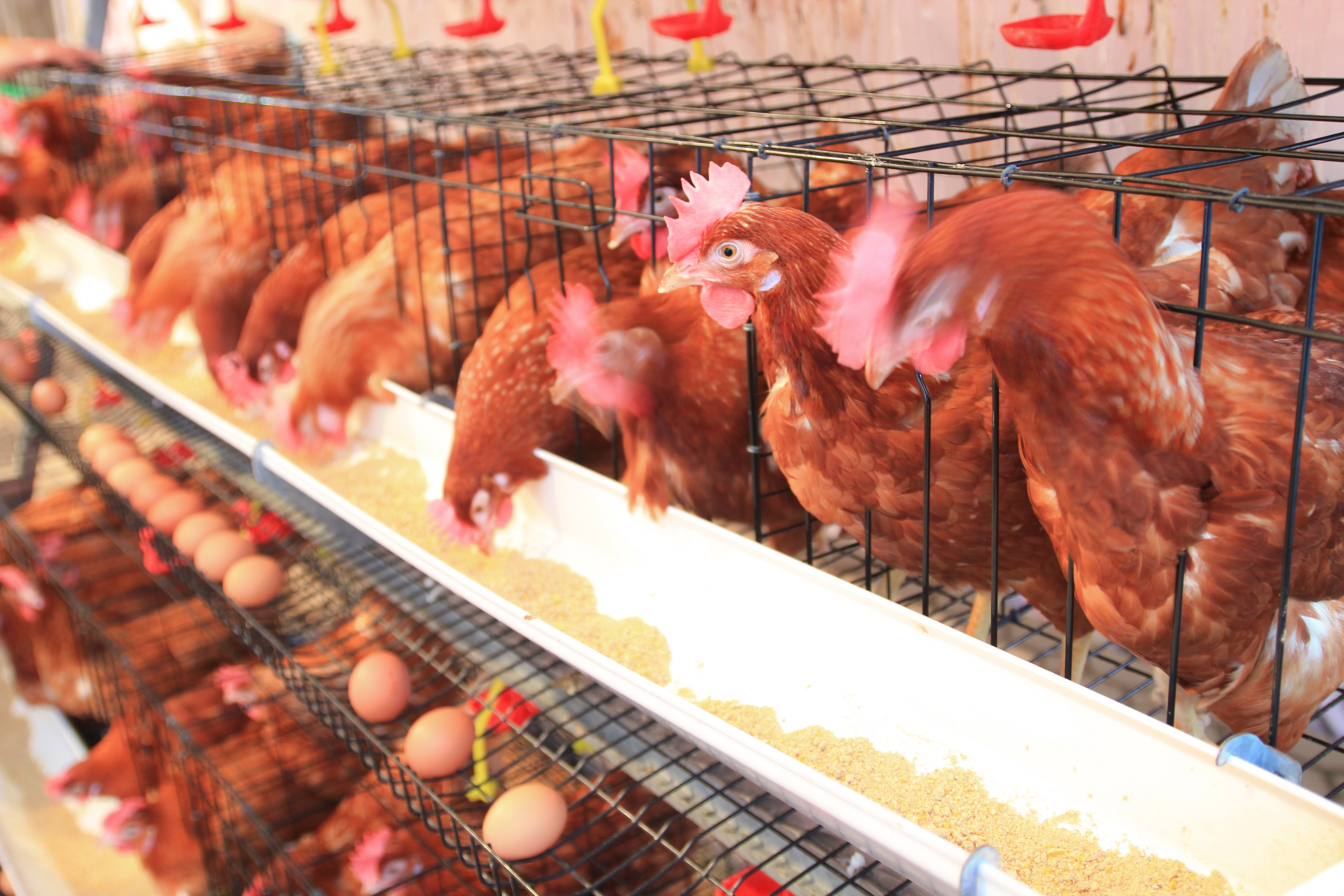
Livestock owners provide the most economical type of shelter that can best maintain the animals’ health and levels of food production. Some livestock need only a windbreak or a shade tree for shelter. Others live in climate-controlled buildings where the humidity, light, sound level, temperature, and ventilation are precisely regulated.
Livestock raised in climate-controlled buildings are usually confined in small groups to reduce competition and fighting. The buildings are designed so that the animal waste falls through cracks into pits below the floor. This design allows the animals to stay dry and clean. The waste is pumped from the pits and carried to the fields, where it is used as fertilizer.
Prevention of disease
ranks as a major concern of livestock raisers. Some diseases can kill large numbers of livestock or be transmitted to people. On rare occasions, to prevent an epidemic, farmers may have to destroy all livestock that have come in contact with infected animals.
The chief causes of livestock diseases include bacteria, fungi, parasites, and viruses. Livestock also can become ill if they consume natural poisons or insecticides and certain other chemicals sprayed on grass and plants. Livestock inherit sensitivity to some diseases.
Many disease-carrying organisms that infect livestock are found in warm climates. Foot-and-mouth disease, tick fever, and other diseases severely limit livestock production in tropical countries.
Diseases tend to spread more rapidly among hogs, poultry, and other livestock that are kept in confined areas. Young animals also tend to become infected easily.
Scientists conduct many research programs to find new ways of combating livestock diseases. These experts work to identify and eliminate the organisms that spread such diseases as salmonella and tuberculosis. Identification of specific genes that produce resistance to diseases can also lead to healthier animals.
Breeding livestock
Livestock raisers select certain animals for reproduction. Such livestock may be chosen because they have a high rate of growth or produce large amounts of meat, eggs, or milk. This practice, called selective breeding, allows farmers to continually improve their livestock. Livestock raisers select only healthy, fertile animals for breeding. There are three chief methods of selective breeding. They are (1) selective mating, (2) inbreeding, and (3) outbreeding.
Selective mating
is the simplest type of livestock breeding. Livestock producers place selected males and females of one species in the same area and allow them to mate. Most commonly, breeders allow only certain females to mate with certain males so that they know the parentage of the offspring. This procedure helps breeders to identify animals that carry desirable genetic traits.
Inbreeding.
Farmers practice inbreeding by mating animals that are closely related to each other. Livestock producers select animals for inbreeding by studying their pedigrees, which list an animal’s ancestors. Livestock that are closely related have similar genes, which are transmitted to their offspring. Inbreeding thus produces highly uniform offspring. These offspring may have a high concentration of the parents’ favorable genes. However, inferior genes that were not visible in the parents may show up strongly in the young. Therefore, inbreeding may produce a small animal or one that lacks resistance to disease. Inbreeding is practiced only among a few select purebred animals.
Outbreeding
is the mating of unrelated animals. Outcrossing and crossbreeding are two methods of outbreeding often used by farmers. Outcrossing is the mating of unrelated animals of the same breed. This method is used by breeders of purebred animals to reduce the chances of undesirable effects of inbreeding. Crossbreeding is the mating of animals of different breeds. Most offspring have a higher performance level than the average performance of the parents. Almost all breeders of nonpurebreds use this breeding method.
Many breeders use artificial insemination to improve the quality of their livestock. The breeders inject diluted semen (sperm-carrying fluid) from a high-quality male into the reproductive tract of the female at the proper time for fertilization. Artificial insemination increases the number of offspring that superior male animals can produce.
Marketing livestock
At one time, farmers brought each type of livestock to market during a certain season. They regulated the rations of the animals to have them ready for sale at a certain time. Today, many livestock producers market animals throughout the year to ensure a steady supply of products and to better regulate pricing.
In the United States, the Department of Agriculture supervises the operations of markets that handle livestock shipped across state borders. The department regulates the fees charged by these markets and prevents unfair and fraudulent trade practices.
Livestock prices are determined in the various markets where the animals are sold. There are three kinds of livestock markets: (1) auction markets, (2) terminal markets, and (3) direct markets.
Auction markets
enable livestock buyers to bid openly. The auctioneer usually starts the bidding at a reasonable price. The animals are sold to the buyer who offers the highest price. If many buyers bid for a certain kind of livestock, the producer usually receives a high price. If few bid, the price tends to be lower.
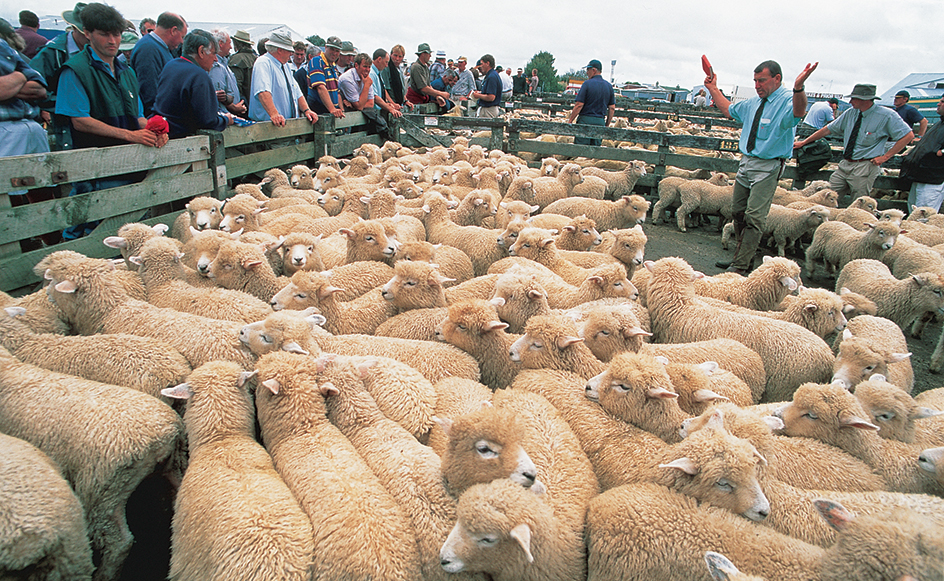
Terminal markets
are large markets near a big city. At one time, all trades made at terminals were private. Terminal markets also operate auctions. Professional market experts help livestock producers sell their animals and receive a commission from the producer for doing so. Because of the cost of the commission and the transportation of animals to a terminal market, producers sell fewer animals this way.
Direct markets.
Sales at direct markets are made between the producer and buyer without the help of a professional agent. Thus, the producer does not have to pay a commission to sell stock. Many meat-packing companies have established buying stations that serve as direct markets. Many livestock producers enter into forward contracts with processors. Such agreements ensure producers a reasonable price for their stock months before the animals are sold. In some countries, livestock producers also practice hedging through various commodity exchanges. Hedging reduces risks by locking in a price for a future sale date.
